Greater than 3 minutes, my friend!
Differences Among Revision, Editing, Proofreading
Do you know the differences among proofreading, editing, revision, and other writing services? If not, don’t worry, you’re not alone. Many people confuse proofreading with editing and revision, thinking that they all mean the same, however, as you will learn, the difference between these and other writing services are largely different and why there might be a contrast in prices when pursuing the services of a professional language service provider.
As stated above, many people confuse these three processes, believing that each process is all one and the same, however, there are stark and well-defined differences among the three processes that go into the refining of a text or document prior to its publishing. Some even add a fourth step – reviewing.
REP: Revision, Editing, Proofreading.
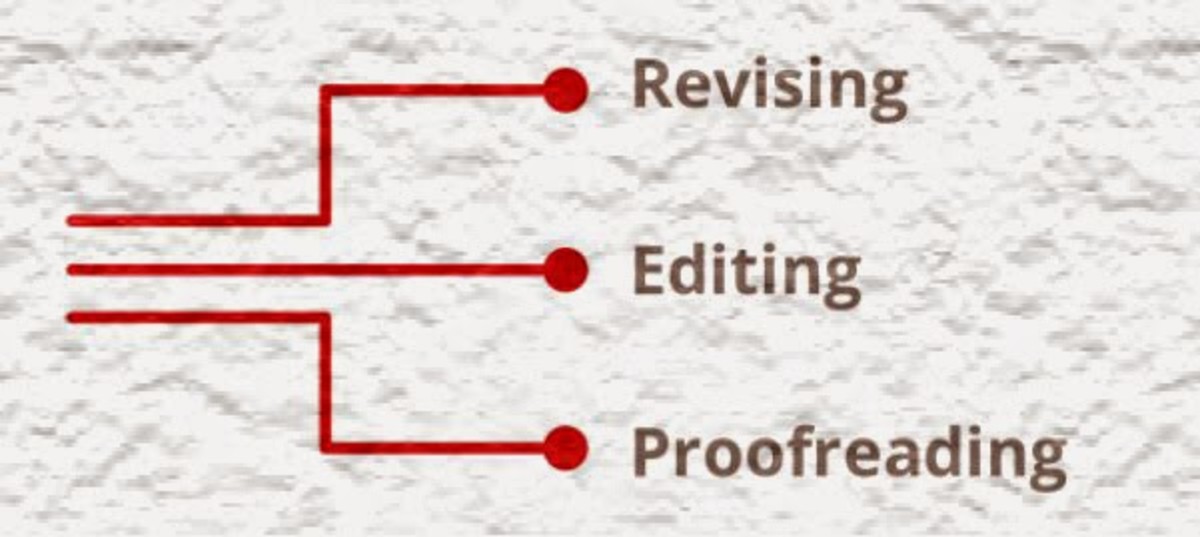
First things first: asking the important questions.
At many writing service companies (also known as language service providers), a number of steps are implemented in order to ensure the accuracy of a document’s message, which is usually carried out in three separate, but equally and vitally important processes. These steps are taken in order to ensure that the message is not hindered by needless wordiness, grammar, or syntax errors, that can be noticed by a professional editor.
The first step that any good editor, worth their weight in gold, will take is to look at the big picture and ask themselves these four essential questions:
1) Does the text of the document respond directly to the task at hand and to its audience?
2) Does it answer all of the questions?
3) Are there any holes in the document that need to be patched?
4) “Should an idea or point that was raised be further developed?
The beginning stage of the process: document revision
The first stage of the process is known as revision.
In short, it means to re-see or re-imagine the document as a whole. It means to take entire sentences and paragraphs and rewrite them from scratch in order to add emphasis to certain points or topics within the bigger picture. The revision of a document sets out to address each important point according to the order of concern. (Organization, audience, development, support, etc). Revision checks and double-checks that the document meets the requirements of the assignment and addresses each of the questions and concerns that an audience could potentially pose while reading or listening to the text being read aloud.
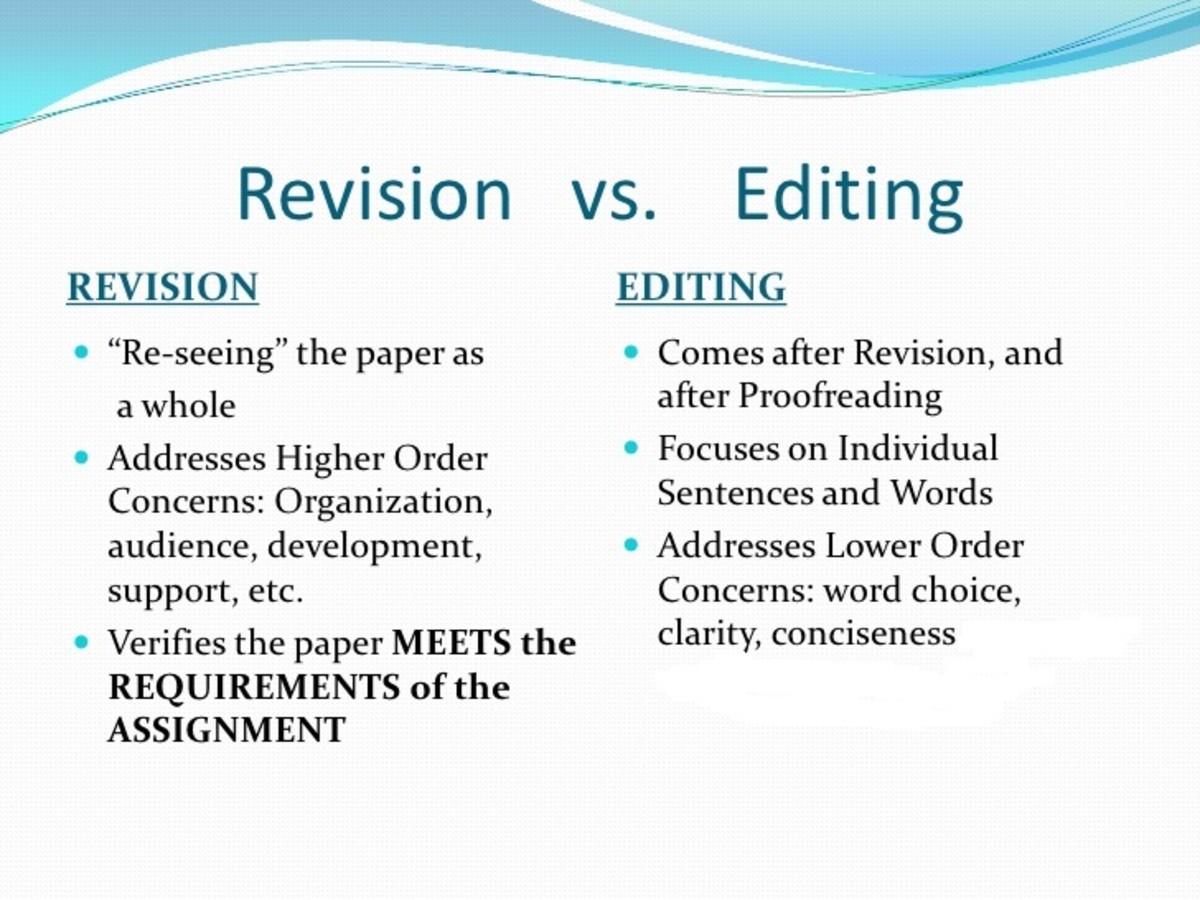
Second Stage: document editing
Once the editor has finished revising the document, she, or he, will begin working on the second part of the process which, in most cases, involves the editing of the document. As a side note — based on my personal experience working in the translation and language service industry, It is this process that is often confused with revision, often getting lumped together, even by some language service professionals; though, as noted above, they are two different and mutually exclusive functions, but each one just as important as the other in the entire process.
The editing stage ensures that the wording of the document is coherent; that is is easily understood by its audience and that the “style” of the entire text isn’t uneven or rumpled like a fine suit that is out of place. It focuses its attention on individual words and sentences, by addressing lower order concerns; It scrutinizes each word of the document, it seeks to clarify as well as bring some clarity to seemingly conflicting points that may be difficult to understand. The process of editing a document also includes looking for ways to make a long-winded document, or speech, shorter, more concise, and possibly taking out certain phrases or parts of sentences that may be too wordy or add very little to the entire text, without compromising the meaning or the message being conveyed by the author.
Tips and strategies for proofreading
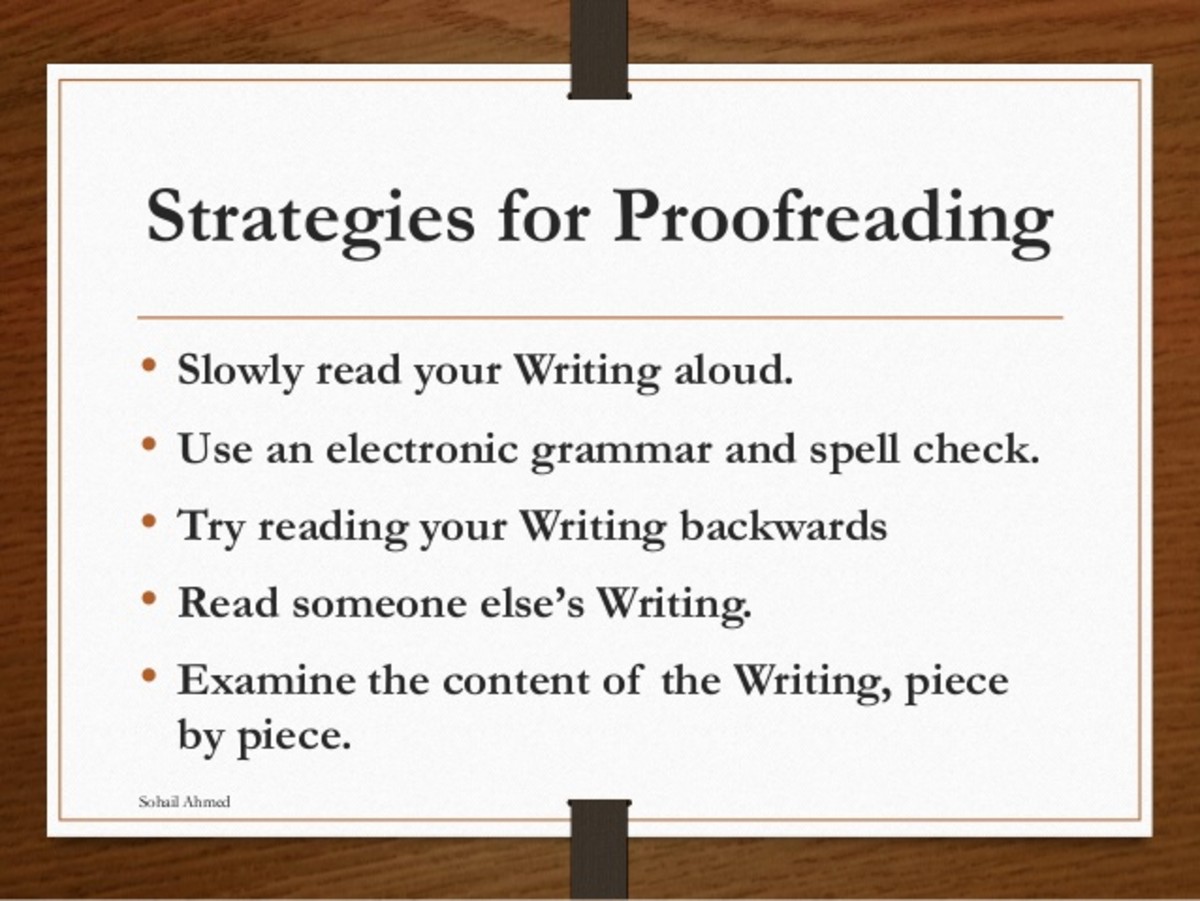
A savvy editor will carefully refine the document by correcting any awkward phrases that may have sneaked their way onto the document during the initial draft or during the revision process. In a nutshell, editing is a lot like making sure that each point and idea is properly connected to the next and works to create one big picture, without being too wordy or losing its intended audience in the process.
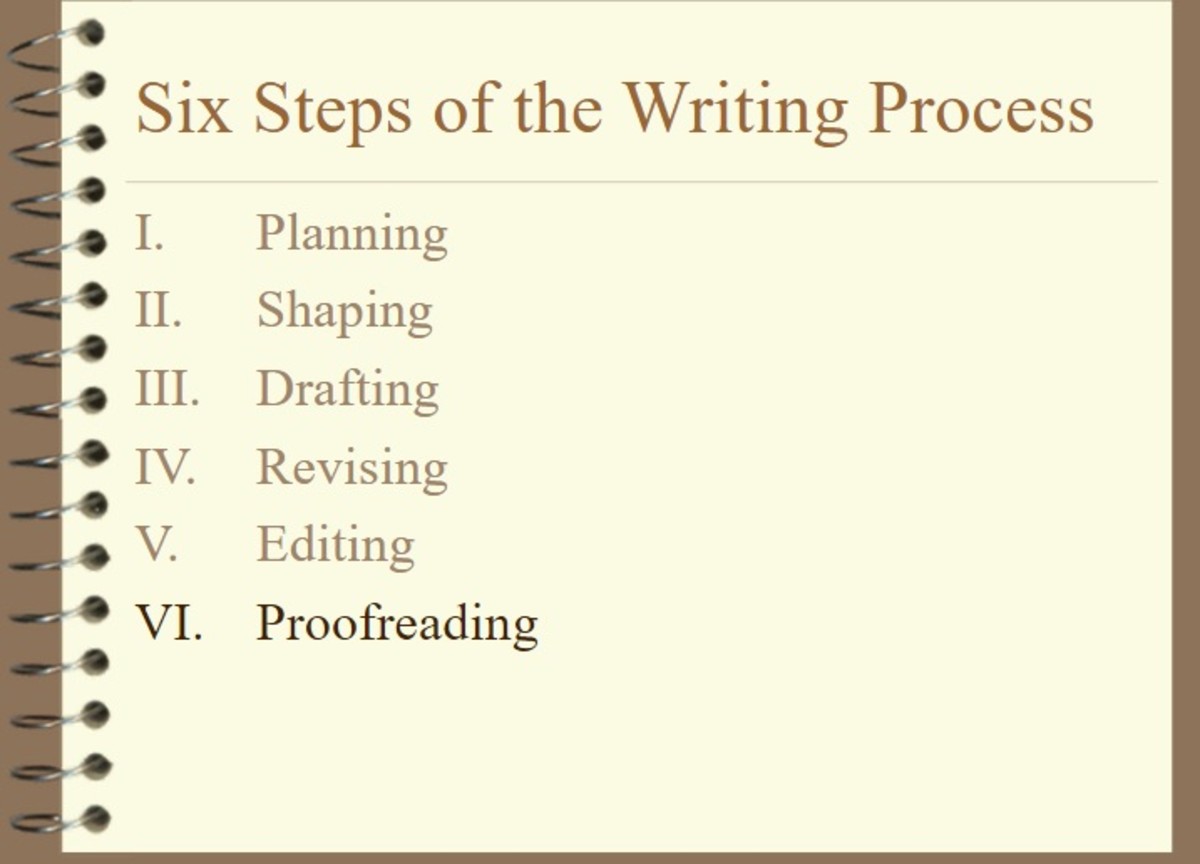
Third stage: document proofreading
The third and (usually) last stage in the refining of a well-written document – irrespective of subject matter – whether it be a speech, a technical manual, or even a novel, is proofreading
The process of proofreading is comprised of checking, adjusting, and taking corrective action, one last time, in order to make sure that that all loose ends have been properly tied together. This is the process in which the editor is specifically looking for any errors in grammar, structure, verb tense, spelling, and punctuation.
It is during this process that editors and proofreaders will examine the entire document with a careful eye before the final draft is sent to its author any last minute suggestions or final approval.
Do you have any questions or comments after reading this article? Please feel free to share your thoughts on this topic or leave your questions below.




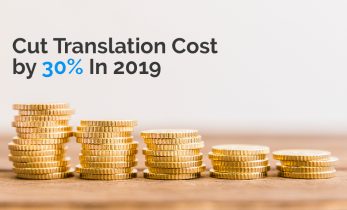

Hi Anthony,
Thank you for your helpful article. However, I’m afraid that instead of shedding light on this, it makes things even more complicated. The difference between all these terms has long been settled. In fact, the answers were given back in August 2006. Since then, we know the following:
a) REVISION is the bilingual examination of TL content against SL content for its suitability for the agreed purpose – also called “bilingual editing”
b) REVIEW is the monolingual examination of TL content for its suitability for the agreed purpose – also called “monolingual editing”
c) PROOFREADING is the examination of the revised TL content and applying corrections (before printing).
So, in a nutshell, revision has to do with 2 languages (SL & TL), while review & proofreading with only 1 language (TL).
Please see the DIN 15038 Standard for Translation Services and the most recent EN ISO 17100:2015 Standard for Translation Services.
I hope I helped you to make things clearer in your mind now:)
If I can be of any help, please let me know.
Kind regards,
evdoxia
Thanks, Anthony, for your interesting post, and Evdoxia as well, for your insightful comment.
Actually, both of you are sort of right: the way in which Anthony is using the terminology is closer to the way some monolingual editors speak, which Evdoxia’s usage is more aligned with the way translators use the terms. As we all know, it is important to know one’s audience when choosing terminology. Since this is a translators’ community, it is probably advisable to follow the usage of the terms customarily followed by translators.
Alternatively, a fascinating post could be written comparing the similarities and differences among the ways in which the two communities, translators and editors, employ the terms “revising,” “editing,” and “proofreading.” It could even serve as a sort of meta-translation between the two groups of language specialists.
Since I work in both communities, I see a lot of differences in how the terms are employed. It is revealing that there has been a certain codification of the terminology in the translation world, as Evdoxia indicates when she helpfully points to the DIN and EN ISO standards. Brian Mossop’s superb book, “Editing and Revising for Translators,” also follows the general lines of such definitions (without referring to codified standards). One reason for such codification is probably due to the explosion of multinational translation agencies over the past decade, where millions of dollars are at stake. The relentless pressures pursued by these huge agencies to make greater profits by finding the cheapest translators is generating a crisis of quality in the translations delivered to clients. In the face of the chaos in the market, international standards committees have been called upon to devise guidelines and codify terminology. Whether such standards and codification will have any impact on the contradictory forces at play in the global translation market is doubtful.
Monolingual editors, however, work much more independently of agencies, the vast number of them working either as freelancers or in-house editors. Would-be agency owners have not yet figured out a way to make much profit off of them, although some are attempting to do so by imitating the translation agency model. Furthermore, the quality of editorial services is much more apparent to clients: because they are dealing with a single language, they can see when a text was well edited simply by comparing it with the unedited version they sent to an editor. It is therefore less likely that agencies could profit from the clients’ ignorance, in contrast to the translation market, where monolingual clients cannot judge the quality of the product so clearly. For these reasons, there has not been a compelling need for international standards committees to step in and try to impose some order.
The terminology used by editors, and the meanings attached to each term, seems to show somewhat more variation than in the translation world, precisely because of the more independent nature of the editing profession and the absence of internationally codified definitions. However, that does not mean that there are no conventions in terminology. The editing profession has an ample tradition behind it, inherited from the pre-globalized economy when fewer translations were sought. This tradition has led to a certain degree of shared understandings about the meanings and activities conducted under the rubric of “revising,” “editing,” and proofreading.” Actually, most of the divergences have blossomed along the spectrum of different kinds of editing and various terms used for them: copy editing, line editing, stylistic editing, content editing, substantive editing, structural editing, developmental editing, light/medium/heavy editing, and so on. Given this diversity, each editor or editing department finds it necessary to offer some definitions to ensure understanding.
Although Anthony’s usage of the terminology may not be the way translators use it, I believe there is value in translators learning more about the kinds of revising and editing that monolingual editors have developed into a fine art. Given the crisis in quality impinging on the translation market, probably the best way that individual translators can distinguish themselves from the competition is to LEARN HOW TO BECOME BETTER WRITERS IN THEIR OWN LANGUAGE. Learning what is entailed in the different kinds of editing, such as the examples offered above, would distinguish their services and boost their business far more than any other single activity.
Thank you very much to you both for sharing your thoughts and contributing to the conversation with your eloquent remarks. Very much appreciated. Thank you.